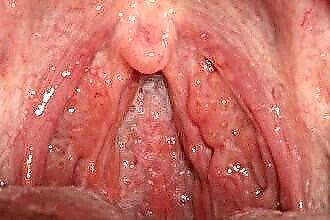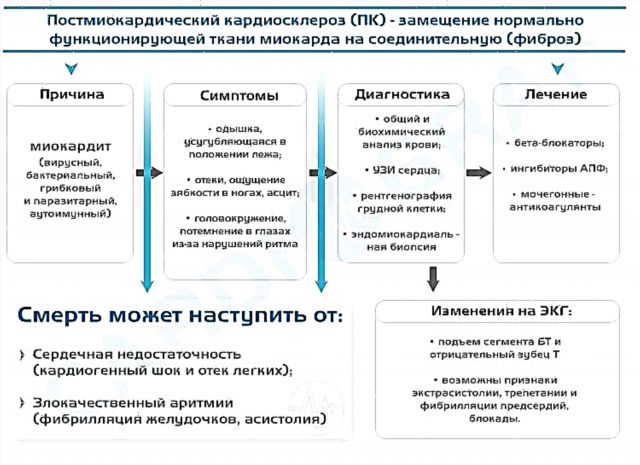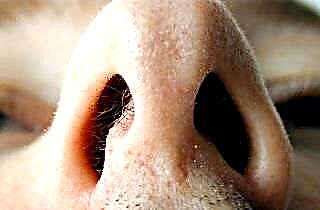 Drugs for the treatment of adenoiditis in children should have an antiseptic, anti-inflammatory and wound healing effect.
Drugs for the treatment of adenoiditis in children should have an antiseptic, anti-inflammatory and wound healing effect.
The active components of medicines negatively affect the child's body and can provoke poisoning. To reduce the toxic effect of drugs on the liver and kidneys, it is advisable to use topical drugs.
For this reason, nebulizer inhalation is used to treat adenoiditis, which have a beneficial effect on the nasal mucosa and eliminate inflammation in the pharyngeal tonsil.
What is a nebulizer?
A nebulizer is a medical device that converts a medicinal solution into an aerosol. Unlike steam inhalers, nebulizers can be used to treat newborns and preschool children without fear of burns in the mucous membranes of the larynx and nasal cavity. Depending on the method of spraying liquids, there are several types of aerosol inhalers:
- ultrasonic - a silent device in which a liquid under the influence of ultrasound is passed through a fine mesh; the sound wave does not destroy the components of the medicinal solution, but only contributes to its transformation into an aerosol;
- compressor - a nebulizer with a built-in compressor, thanks to which the liquid is enriched with oxygen and enters a special chamber under pressure; unlike an ultrasonic apparatus, compressor devices are several times cheaper, but they also work more noisily;
- mixed - portable devices that combine the advantages of the two above-described models of nebulizers.
Children do not like inhalation and refuse to use medical devices. But so that the procedure does not turn into torture for the child, modern manufacturers began to produce nebulizers in the form of toys. Thus, parents manage to carry out physiotherapy in the form of a game, without fear of the whims of the little patient.
Why are nebulizers good?
Aerosol devices have many advantages over traditional steam inhalers. Firstly, they do not destroy the structure of drugs, and secondly, they contribute to the rapid absorption of beneficial components in the tissue of the nasopharynx. The systematic use of nebulizer therapy can alleviate the symptoms of adenoiditis, quickly eliminate inflammation and increase local immunity.
The popularity of nebulizers is explained by the following advantages over other methods of ENT disease treatment:
- high efficiency - the aerosol quickly penetrates directly into the lesions, thereby accelerating the regression of inflammatory reactions;
- no burns - aerosol suspension does not cause burns, because solutions at room temperature are used in nebulizers;
- multivariance - almost any water-based drugs can be poured into nebulizers.
To achieve the desired therapeutic effect, inhalation should be carried out at least 3-4 times a day for 5-7 minutes.
Due to the low resistance of the body to infections, young children often suffer from adenoiditis, tonsillitis, pharyngitis and other respiratory diseases. Compressor and ultrasonic nebulizers will not harm even a baby, so they can be used to treat children of any age.
Therapeutic action
Why is it worth using a nebulizer for adenoiditis in a child? Aerosol inhalers have a beneficial effect on the state of the ciliated epithelium, which is covered with the inner surface of the nasopharynx. With regular inhalations, the removal of purulent mucus from the nose is accelerated and the functioning of the pharyngeal tonsil is normalized.
Physiotherapy treatment is carried out for:
- elimination of puffiness;
- moisturizing the nasal mucosa;
- disinfection of the nasopharynx;
 increasing local immunity;
increasing local immunity;- cleansing the tonsils from mucous plaque;
- elimination of foci of inflammation in the pharyngeal tonsil.
Nebulizer therapy is used not only for the treatment, but also for the prevention of colds. Inhalations are designed to eliminate the pathogenic flora and foci of inflammation in the adenoids. Thanks to physiotherapy, it is possible to eliminate congestion, manifestations of chronic rhinitis, dry cough and symptoms of intoxication (fever, weakness, lack of appetite).
Instructions
It should be understood that the appointment of any antiseptic and anti-inflammatory solutions is within the competence of the attending physician. Only a specialist can correctly draw up a therapy regimen, determine the dosage of medications and the duration of inhalation procedures. When carrying out physiotherapy, it is imperative to take into account the following nuances:
- to dilute medicinal solutions, you can use mineral water or physiological solution (sodium chloride solution);
- the temperature of the prepared preparation should not exceed 25-28 degrees;
- it is not recommended to use distilled or boiled water;
- the duration of one session should not exceed 7-10 minutes.
Do not pour oil preparations into the nebulizer chamber, as they clog the filters, which leads to damage to the device.
Overview of nebulizer preparations
Adenoiditis is an infectious disease that can be caused by microbes (staphylococci, streptococci) or viruses (adenoviruses, rhinoviruses). To eliminate inflammation in the tonsils, antibacterial, vasoconstrictor, antiviral and immunostimulating drugs are used. For the treatment of adenoiditis in young children, it is recommended to use the following pharmacy products:
| Name | Operating principle | Duration of treatment | Contraindications |
|---|---|---|---|
| Derinat | helps to increase local and general immunity | from 4 to 10 days | allergy to the components of the solution |
| "Fluimucil" | eliminates inflammatory processes in adenoid tissues | no more than 12-14 days | leukopenia, anemia, impaired blood clotting |
| "Lazolvan" | reduces the viscosity of sputum and accelerates its evacuation from the nasal passages | up to 6 days | hypersensitivity to the active ingredients of the drug |
| Tonsilgon | stimulates local immunity and relieves inflammation in the respiratory system | from 5 to 14 days | renal and hepatic failure, brain abscess |
| Miramistin | relieves puffiness and accelerates the resorption of inflammation foci | until the signs of adenoiditis disappear completely | dry nasal mucosa, allergic rhinitis |
Antibacterial drugs can be used only with the development of microbial flora in the adenoids.
Direct indications for the use of local antibiotics are purulent nasal discharge, fever and symptoms of intoxication.
Contraindications
Inhalation with a nebulizer also has some contraindications that must be taken into account when drawing up a treatment regimen for adenoiditis in children. It should be understood that physiotherapy allows you to eliminate inflammation and swelling of the adenoids, but it does not help to reduce their size. It is recommended to refrain from using aerosol inhalers when:
- high temperature (over 37-38 degrees);
- nosebleeds;
- liver failure;
- acute inflammation of the lower respiratory tract;
- hypersensitivity to drug components.
The effectiveness of nebulizer therapy depends not only on the spectrum of action of the applied medicinal solution, but also on the correctness of the procedure. Before inhalation, it is necessary to rinse the nose with Physiomer, Aqua Maris and other isotonic solutions that help cleanse the nasopharynx of mucus. To facilitate nasal breathing and the penetration of aerosol into the nasal cavity before the start of the session, it is advisable to use vasoconstrictor drugs - "Naphtizin", "Dlya Nos", "Galazolit", etc.
Drug therapy
The main goal of drug treatment is to reduce inflammatory reactions in the nasal cavity and pharyngeal tonsil. To suppress the activity of the pathogenic flora in the immune organ, anti-inflammatory, disinfecting, wound healing and anti-edema medicines are used. In pediatric practice, for the treatment of adenoiditis, the following can be used:
- vasoconstrictor nasal drops ("Sanorin", "Galazolin") - accelerate the outflow of intercellular fluid from lymphadenoid tissues, as a result of which the child's well-being improves and nasal breathing is normalized;
- antibacterial agents ("Albucid", "Protargol") - destroy microbes that provoke purulent-necrotic changes in the tissues of the nasopharyngeal tonsil;
- antiallergic drugs ("Popilfen", "Claritin") - relieve swelling and restore the patency of the nasal passages;
- means for washing the nasopharynx ("Humer", "Aqua Maris") - eliminate inflammation and "draw out" purulent exudate from the affected tissues.
In addition to pharmaceutical preparations, you can use folk remedies that have anti-inflammatory effects.
To reduce edema and the severity of allergic reactions, it is recommended to rinse the nasal passages with non-concentrated decoctions based on oak bark, birch buds and sage. Herbs contain phytoncides, which have a pronounced anti-inflammatory effect on lymphoid tissues.

 increasing local immunity;
increasing local immunity;

